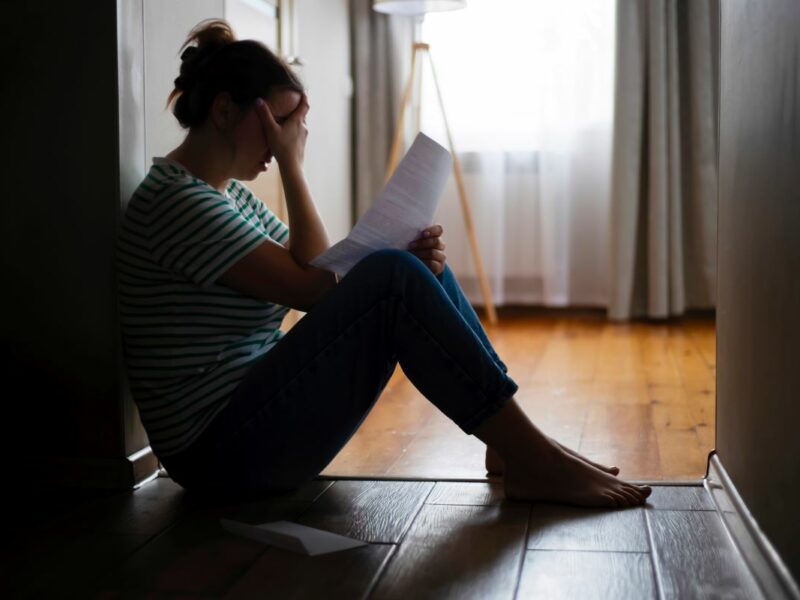Urban Planning’s Unseen Consequence: Unwalkable Cities Are a Silent Threat to Lives
Walkable cities have been a trending topic in the United States ever since we all collectively started to realize how unusually reliant we are on cars and how much of an impact on the planet those cars (and the related industries) are having. But it’s not just an environmental issue. It’s also a homelessness issue.
The poor walkability of most American cities, coupled with unreliable or nonexistent public transportation, adds a lot to the already heavy burden of many homeless people.
Even if you have a vehicle, having to drive everywhere when things are so spread out can make your gas costs add up quickly. And without a car, walking miles and miles a day along roads not designed for pedestrians in all sorts of weather takes a real toll on your body.
Since most drivers aren’t accustomed to watching out for pedestrians, and roads aren’t designed with pedestrians in mind, walking in an “unwalkable” city can be fatal.
What Makes a City Walkable?
The first thing that comes to mind when you think of a walkable city may be the idea of having grocery stores, doctors’ offices, parks, and restaurants clustered in villages close to where people live and work. That is undoubtedly important, and a walkable city won’t get very far without things to walk to within a reasonable distance.
But a walkable city is more than just having the right things in the suitable locations. In order to be truly walkable, there must also be safety features like accessible sidewalks and safe crossings. These features make it feasible for people of all levels of mobility to get where they need to go without taking their life in their hands. As a pedestrian, imagine crossing eight lanes of distracted drivers or blazing a trail along the shoulder of a highway.
Walkable cities should also be accessible. Sidewalks need to be wide and smooth enough to allow for wheelchair and stroller use, as well as have curb cuts in places that make sense.
Aren’t Walkable Cities Expensive?
We have a few early examples of walkable cities in America, and so far, they’re all more expensive to live in than the surrounding non-walkable areas. The problem there could be twofold:
One, more expensive cities often have more funding to work with in order to improve living conditions for residents by improving walkability.
Two, in the current system, we insist on riding until it dies; an increase in demand for something also increases its price when the supply is insufficient to meet demand.
Just about everyone wants to live in a walkable area. Because very little housing that meets that description is available, everything that does is currently costly.
Unfortunately, because we still view housing as a commodity, gradual changes to make select cities more walkable have too often contributed to gentrification and pushed original residents out of their hometowns and sometimes out of their homes entirely.
However, this doesn’t have to be the case.
Dramatically increasing the supply of walkable housing by increasing the overall walkability of our cities and towns could bring the price down substantially. This would allow people to continue living in their homes with more access to amenities and without an astronomical increase in cost.
I’m sure there was a time when housing with indoor plumbing was rare and expensive, but now it’s just expected. The same could be made true for housing in walkable areas.
How Is This a Homelessness Issue?
Many homeless people spend each day walking back and forth from work, shelters, meals, appointments with government agencies, libraries, shower locations, laundromats, bathrooms, medical appointments, and just from place to place as they’re constantly being told to move along.
These places are rarely close together and connected by well-maintained sidewalks with good lighting. Add to this that they often carry all of their worldly possessions, and you start to understand how exhausting this can become.
And it’s not just exhausting- many of these people are struck by cars as they walk and injured or killed daily. The cost of poor urban planning is actual people’s lives. Implementing well-designed, walkable neighborhoods across America can make this a thing of the past.
Not Just A First World Problem
The issue of walkable cities may be getting a bit of a bougie reputation as a problem that only exists on HGTV. You know, when a house hunter wants to be able to step out of their front door and walk to work, the kid’s school, the opera house, and the local organic farmer’s market. But that’s just because only affluent people can afford to live in one of America’s few walkable locations.
In reality, this issue affects people of all socioeconomic statuses. And, of course, the poorest among us are the ones who are hit the worst.
Walkable cities are a good thing for everyone. We can all benefit from safe and easy-to-navigate sidewalks, not having to fight traffic just to get to the dentist on time, and actually seeing and being able to talk to our fellow community members as we go about our daily lives.
With as much fuss as NIMBYs make about accessible sidewalks when it’s time to sweep some encampments, you’d think this issue would lay heavier on their hearts.
We don’t have to live in a world where pedestrians dying in poorly designed crosswalks or on the side of a too-busy street is just a daily fact of life. We don’t have to accept those losses. It’s time for us to speak up and let our representatives know we’re not going to anymore. Walkable cities help everyone, especially our unhoused neighbors, and we should all advocate for them.











